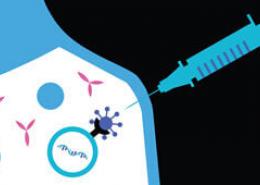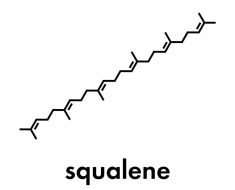MRNA VS. CONVENTIONAL VACCINES

Working Together to Empower Women

Reducing Health Disparities in Latino Communities

Pfizer Women’s Resource Group

Universal vs. Single Payer Healthcare

In 2015, on the eve of the Paris Agreement, Pfizer was one of the first companies in the world to seek and gain approval of its greenhouse gas emission reduction goal from the Science Based Targets Initiative (SBTi). Since then, leading scientific researchers, together with coalitions such as SBTi, have urged the private and public sectors to increase their commitments to address the growing urgency of the climate crisis. The science is now irrefutable; action is required to meet the goals of the Paris Agreement of limiting temperature rise to 1.5°C in order to prevent the catastrophic impacts of climate change.
That’s why, on renewing its greenhouse gas reduction goals, Pfizer committed to more ambitious targets and successfully sought approval by SBTi. Pfizer is dedicated to becoming carbon neutral across its internal operations by 2030. Becoming carbon neutral includes reducing direct emissions by 46 percent from a 2019 baseline, purchasing 100 percent electricity from renewable sources, and addressing any remaining emissions through carbon credits. Pfizer also intends to reduce indirect emissions from upstream logistics (associated with transportation and distribution of products) by 10 percent and business travel by 25 percent by 2025 (again, from a 2019 baseline). Further, Pfizer is working to accelerate change across its supply chain, driving its suppliers to also set science-based greenhouse gas reduction goals.
Louise Proud, Vice President, Global Environment, Health & Safety at Pfizer, sheds some light on what rising to the climate action challenge means and what Pfizer is doing to make a difference.
Why is environmental sustainability important to Pfizer?
At Pfizer, we truly recognize the profound societal and public health impacts that may result from environmental issues, including climate change.
We’re operating in a world with a growing population that has increasing expectations for a better lifestyle, to be delivered from a planet with finite resources, which are depleting. For example, water scarcity and drought impact food sources, leading to food insecurity and malnutrition. Rising global temperatures can lead to physical threats such as wildfires and heat related illnesses. Poor air quality caused by pollution has been linked to respiratory illnesses, including asthma and cardiovascular disease.
Because of rising temperatures, we’re seeing more places in the world threatened by vector borne diseases such as malaria, Dengue fever, Lyme disease and encephalitis. These threats are real and highlight that planetary health impacts public health. And Pfizer, as a biopharmaceutical company, has a role to play. We’re increasing the resilience of our supply chain to climate-related threats. We’re limiting our environmental impact by driving action throughout our value chain. We’re applying the power of science and engineering to contribute to these challenges and innovating to bring products to the market that tackle health conditions linked to climate. And we’re engaging externally to make our position on the need for urgent climate action known.
What are some of the methods Pfizer is using to work toward the company’s environmental goals?
As a science guided organization, Pfizer takes a proactive stance on our environmental initiatives. Over the past 20 years, we’ve taken significant voluntary steps to reduce our greenhouse gas emissions. In that time, we’ve reduced direct greenhouse gas emissions by more than 60 percent.
We made this progress because we take a holistic approach to meet our environmental goals, harnessing the collective and deliberate efforts of our global network of dedicated colleagues.
Our manufacturing and R&D sites have long-term environmental sustainability masterplans outlining planned actions to reduce impact. These actions range in scale and complexity. For example, we look for opportunities to design environmental sustainability attributes into new facility or renovation projects so we can deliver greener buildings. We try to replace equipment at end of life with energy-efficient alternates. We invest in no/low carbon technologies at our sites and in programs that enable sourcing of clean energy from renewable sources. We also endeavor to undertake process enhancements within our product manufacturing processes to reduce the number of steps and resources required.
What does Pfizer’s SBTi-approved goal of achieving 100 percent renewable electricity by 2030 actually mean?
As a result of recent changes to our business, including the separation of the Upjohn business, Pfizer currently sources 5 percent of electricity from renewables for worldwide operations. The goal, by 2030, is for all of our purchased electricity to be from renewable energy sources. We have a long way to go, but our commitment is strong. To accomplish this, we’re beginning by focusing on North America. In October 2021 we entered into a virtual power purchase agreement (VPPA) with Vesper Energy. Under this 15-year arrangement, Pfizer will receive 310 MW (megawatts) of renewable energy from Vesper Energy’s 500 MW Hornet Solar project in West Texas. That facility is expected to be operational by the end of 2023. Once it is, Pfizer’s North American operations will be 100 percent powered by solar energy.
One aspect of Pfizer’s environmental sustainability efforts is concurrently working to achieve the company’s own goals and also setting goals for companies from which Pfizer sources goods and services. Why is Pfizer focusing its environmental efforts beyond internal efforts?
Pfizer’s indirect greenhouse gas emissions footprint is more than four times that associated with the company’s direct emissions. The most significant contributor to our indirect emissions comes from buying goods and services, involving thousands of suppliers around the world. So, we’re urging all of our suppliers to unite with us in making a commitment to action and integrating ambitious climate impact reduction targets into their management processes.
We really do believe that collective action will truly increase global impact.
That’s why, in addition to the environmental sustainability goals set for our internal operations, in 2015, we also established our first goals aimed at influencing approximately 120 suppliers to establish robust environmental sustainability programs with greenhouse gas, waste, and water reduction targets.
To be transparent, we didn’t quite hit our 2020 supplier sustainability target of 90 percent with established targets, although we made tremendous progress, with 75 percent setting greenhouse gas reduction targets. It’s only made us more determined to meet our new, more ambitious goals.
After all, our efforts alone won’t create the level of action needed to address the complex threat of climate change.
Pfizer’s goal (in accordance with SBTi), is to ensure that 64 percent of suppliers will have set science-based targets by 2025. What does this mean, and what is Pfizer doing to help suppliers to set and work toward these goals?
Action is required throughout our value chain to drive down greenhouse gas emissions. So, Pfizer is urging all suppliers to take responsible action by committing to a science-aligned greenhouse gas reduction target.
We’ve integrated environmental criteria across our supplier sourcing, contracting, and performance management processes. Now we’re asking suppliers to commit to climate action by establishing their greenhouse gas emissions baseline no later than the end of 2022, and setting a greenhouse gas reduction target in line with SBTi guidance by the end of 2025.
We’re also excited to be joining Energize, a first-of-its-kind collaboration between 10 global pharmaceutical companies to engage suppliers in decarbonization of the pharmaceutical value chain through renewable energy procurement. The program, which is designed and delivered by Schneider Electric, will enable pharmaceutical suppliers to learn more about renewable energy adoption, and contracting. In practice, this will mean giving suppliers—who may not otherwise have the internal resources or expertise available—the opportunity to participate in the market for power purchase agreements (PPAs).
What are some of the biggest challenges Pfizer faces going forward while working toward environmental sustainability?
Pfizer aspires to take ambitious action.However, this involves transition and in some respects a leap of faith that new technologies will become available to enable the transition, in the time and scale needed.
One challenge is the availability of fossil fuel-alternate technologies. We particularly need to account for those used to generate heat and produce steam in order to meet the demand of product manufacturing operations and to accelerate the transition from natural gas-powered systems to low/no carbon energy sources.
Accelerating change requires dedication and action from Pfizer’s extensive globally distributed value chain, who also face similar challenges in the pace of transition. The scale of change needed cannot be underestimated. It requires collective contribution and the creation of progressive standards that incentivize change.
Voluntary measures, such as those being taken by Pfizer and many other companies around the world, often offer the greatest opportunity for companies to design innovative solutions that work best for their particular situation, product range, and investment timelines. Tackling climate change, however, will require action from all parties across all sectors, and Pfizer urges governments both in the U.S. and abroad to establish ambitious climate policies to stabilize global temperature rise at 1.5 degrees.
While there is no one magic action that alone will deliver the full solution, through collaborative public and private action that leverages expertise, resources, and scale, we can get there… together.
Source: Read Full Article





